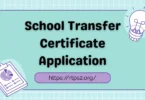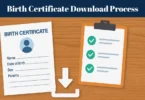Caste Certificate Verification Guide helps you understand how to confirm that your caste certificate is real and valid. This process is important because it proves your eligibility for government benefits, scholarships, and special reservations.
In this guide, we will explain each step in clear and simple words so anyone can follow it easily. Whether you are checking your certificate online or at a local office, this guide will make the process faster and easier for you.
What Is a Caste Certificate and Why Verification Matters?
A caste certificate is an official document given by the government to certify that you belong to a specific caste, community, or category such as Scheduled Caste (SC), Scheduled Tribe (ST), or Other Backward Class (OBC). It is very important in India because it allows people to get certain benefits like:
- Reservation in jobs and education
- Scholarships from the government
- Relaxation in application fees
- Other welfare schemes
Verification of your caste certificate is equally important. Just having a certificate is not enough—government departments and institutions must check that it is genuine and not fake. If your certificate is not verified, you might lose your benefits or face legal problems.
Gather Required Documents
Before starting the verification process, you need to collect some documents. Having all papers ready will save you time and avoid rejection.
Common documents needed for caste certificate verification:
- Original caste certificate
- Identity proof (Aadhaar card, voter ID, PAN card, or passport)
- Proof of residence (electricity bill, ration card, or rent agreement)
- Birth certificate (sometimes required)
- Passport‑size photographs
- Application form (filled and signed)
Tips:
- Keep both photocopies and originals ready
- Make sure the names on all documents match exactly
- Keep documents in a neat file for easy handling
Find the Correct Verification Authority
Every state in India has its own rules and offices for caste certificate verification. Usually, the verification is done by:
- Tehsildar or Sub‑Divisional Magistrate (SDM) office
- District Collector’s office
- State online citizen service portal
How to find your authority:
- Visit your state government’s official website
- Ask at the local Tehsil or District office
- Call the helpline number of your state’s public service department
Fill Out the Verification Application Form
Once you know the right office, you need to fill out a verification form.
What the form usually asks for:
- Your name as per the certificate
- Father’s or guardian’s name
- Caste category and sub‑caste
- Address details
- Certificate number and issue date
- Reason for verification
Filling tips:
- Use capital letters where required
- Avoid overwriting
- Double‑check spelling and numbers
- If online, fill carefully before clicking “Submit”
Submit Documents & Application
After completing the form, submit it along with your documents.
Ways to submit:
- In‑person:
- Visit the Tehsil or SDM office
- Submit documents to the verification officer
- Get an acknowledgment slip
- Online:
- Log in to your state’s service portal
- Upload scanned copies of documents
- Save your application ID for tracking
Always keep a photocopy or digital copy of the application for your record.
Pay Any Required Fees (If Applicable)
Some states do not charge a fee, but others may charge a small amount for processing.
Common payment options:
- Cash at the office counter (get a receipt)
- Online payment via debit/credit card or UPI
- Bank challan
Advice: Keep the payment receipt safe, as it may be needed to collect the verified certificate.
Track Your Application Status
After submission, you can check your application’s progress.
- For offline applications:
- Use the acknowledgment slip number to inquire at the office
- For online applications:
- Visit the state service portal
- Enter your application ID
- View status: Pending, Under Process, or Verified
Receive Verification Result
When your application is approved, you will receive the verified caste certificate.
How to get it:
- Offline: Collect it from the office counter
- Online: Download the verified certificate from the portal
The verified certificate may have a stamp, signature, or QR code to prove it is genuine.
What to Do If Verification Is Delayed or Rejected
Sometimes verification can take longer, or it may be rejected.
If delayed:
- Follow up at the office or check online regularly
- Contact the officer handling your case
If rejected:
- Find out the reason (missing document, incorrect details)
- Correct the error and re‑apply
- If you believe it was wrongly rejected, you can file an appeal with higher authorities
Extra Tips for a Smooth Verification Process
- Always use the same name spelling in all documents
- Check your application twice before submitting
- Submit valid and up‑to‑date documents only
- Keep a copy of everything you submit
Common Mistakes to Avoid
- Submitting incomplete forms
- Using expired proof of residence
- Forgetting to keep payment receipts
- Providing incorrect contact details
Common FAQs About Caste Certificate Verification Guide
Some faqs of Caste Certificate Verification Guide:
1. What is caste certificate verification?
It is the process of confirming that your caste certificate is genuine.
2. Who verifies caste certificates?
Usually, the local Tehsildar, SDM, or the state’s online service authority.
3. Is there a fee for caste certificate verification?
Some states charge a small fee; others do it for free.
4. Can I verify my caste certificate online?
Yes, most states offer an online verification option.
5. How long does verification take?
It can take from a few days to a few weeks, depending on the state.
6. What happens if my certificate is fake?
Legal action can be taken, and you will lose all related benefits.
7. Can I track my verification application?
Yes, using your application ID online or at the office.
8. Do I need to renew my verified caste certificate?
In most cases, no; it is valid for life unless rules change.
9. What documents are required for verification?
Identity proof, address proof, and the original caste certificate.
10. What if my application is rejected?
You can correct the mistakes and re‑apply or appeal the decision.
Conclusion
The Caste Certificate Verification Guide is your complete companion for making sure your caste certificate is authentic and valid. By following the steps collecting documents, filling the form, submitting it to the right authority, paying any required fee, and tracking your application you can complete the process smoothly.
Verification is essential because it protects you from fraud and ensures you get the benefits you deserve. Avoid common mistakes, follow the correct procedure, and keep all your records safe.






